Table of Contents
- Introduction
- The Limitations of Standard Aluminum Grades
- Why Customization is Necessary
- Specialized Compositions for Targeted Properties
- Alloying Elements and Their Effects
- Manufacturing Processes for Custom Alloys
- Quality Control and Testing
- Real-World Examples and Case Studies
- Data Tables: Composition vs. Performance
- Research Findings and Industry Insights
- Environmental and Economic Considerations
- Future Trends in Custom Aluminum Alloys
- Conclusion
- Sources
Introduction
Aluminum alloys have long been the material of choice for wire rods due to their excellent conductivity, lightweight nature, and ease of fabrication. However, as technology evolves and application requirements become more demanding, standard grades of aluminum sometimes fall short. Engineers and manufacturers are turning to custom aluminum alloys to meet specific needs that standard grades cannot satisfy. These custom alloys are carefully tailored to achieve desired levels of conductivity, tensile strength, or creep resistance, among other properties.
When standard grades aren’t enough, the creation of bespoke aluminum compositions becomes crucial. These specialized alloys are crafted with exacting attention to material properties that are critical in high-performance, demanding environments. By adjusting the alloying elements and manufacturing processes, manufacturers can produce wire rods that excel in conductivity for power distribution, offer remarkable tensile strength for structural applications, or provide exceptional creep resistance for high-temperature scenarios.
Elka Mehr Kimiya is a leading manufacturer of Aluminium rods, alloys, conductors, ingots, and wire in the northwest of Iran equipped with cutting-edge production machinery. Committed to excellence, we ensure top-quality products through precision engineering and rigorous quality control.
The Limitations of Standard Aluminum Grades
Standard aluminum alloys, such as the common 1100 and 1350 series used in wire rods, offer a good balance of conductivity and workability. They are cost-effective and have predictable performance in many applications. However, their properties are uniform and generalized, which makes them unsuitable for specific situations requiring enhanced performance in one or more aspects.
For instance, in high-voltage power transmission, the need for ultra-high conductivity becomes paramount to reduce energy losses. Similarly, in aerospace or automotive industries, wire rods may be subject to high stress, requiring superior tensile strength. In continuous high-temperature applications, standard alloys may creep, deforming gradually under sustained load, which is unacceptable in precision systems.
The uniformity that makes standard alloys accessible and economical also means they come with compromises. When these compromises are not tolerable—such as when the demand for strength, resistance to deformation, or electrical performance goes beyond what standard grades offer—turning to custom alloys becomes necessary.
Why Customization is Necessary
Customization of aluminum alloys for wire rods serves a dual purpose: meeting unique performance requirements and creating competitive advantages in specialized markets. Custom alloys allow engineers to design solutions that precisely match application demands, reducing the need for over-engineering and optimizing material usage.
When faced with specific conductivity, strength, or durability requirements, a tailored alloy can provide improved performance without the need to modify equipment or processes extensively. This specialized approach allows manufacturers to avoid the pitfalls of using generic materials that may not perform adequately under certain conditions. Instead, with custom alloys, they can reduce failures, extend product life, and increase efficiency.
For example, in an application requiring high electrical conductivity, a slight improvement in material composition can yield significant energy savings over the lifetime of the wire. In another scenario, enhancing tensile strength by optimizing the alloy composition could prevent costly repairs and downtime in critical infrastructure.
Customization requires a deep understanding of metallurgy, including how different alloying elements interact to produce specific microstructures and properties. It also involves fine-tuning manufacturing processes to maintain the desired properties consistently across large production runs.
Specialized Compositions for Targeted Properties
Custom aluminum alloys are engineered to improve one or more performance characteristics beyond what standard grades offer. These specialized compositions focus on three primary target properties: conductivity, tensile strength, and creep resistance. Each application may prioritize one property over the others, or demand a balance among them.
Enhancing Conductivity
High conductivity is essential in applications where energy loss must be minimized. By carefully adjusting the alloy composition, manufacturers can produce aluminum wire rods with electrical conductivities that approach, and sometimes even rival, those of pure copper while retaining the weight and cost benefits of aluminum.
Increasing conductivity often involves reducing the amount of alloying elements that scatter electrons and impede electron flow. However, pure aluminum lacks the strength and formability needed for many applications, so a balance must be struck. Custom alloys might use small amounts of elements like magnesium or silicon to maintain strength without sacrificing conductivity significantly.
For example, an aluminum alloy for high-voltage power lines may contain less of the impurity elements that lower conductivity, resulting in a material that delivers power more efficiently. Engineers balance the trade-off between strength and conductivity to tailor the alloy to the specific use case.
Maximizing Tensile Strength
Tensile strength is a critical property for wire rods that will be under mechanical stress, such as those used in construction, automotive cables, or aerospace applications. To maximize tensile strength, alloying elements like copper, manganese, and magnesium are added in controlled amounts. These elements form intermetallic compounds or solid solutions that strengthen the aluminum matrix.
In some cases, the wire rods are subjected to thermomechanical processing, such as cold working and heat treatment, to further increase their strength. Custom aluminum alloys designed for high tensile strength must maintain good ductility, so they can be drawn into wire without breaking. This often involves optimizing the grain structure through precise control of the cooling rates during casting and subsequent annealing processes.
A high-strength aluminum wire rod might be used in aircraft wiring harnesses, where both strength and lightweight characteristics are essential. The custom alloy can provide superior strength without compromising flexibility, ensuring that the wires withstand vibration and stress over long service lives.
Improving Creep Resistance
Creep resistance is vital for wire rods used in high-temperature environments, where they must maintain dimensional stability over long periods. Creep is the tendency of a material to deform permanently under a constant load, particularly when exposed to high temperatures. For applications like engine components, power lines in hot climates, or industrial furnaces, creep resistance ensures that wires do not elongate or sag excessively over time.
Enhancing creep resistance typically involves adding elements that form stable precipitates or strengthen the grain boundaries, making the material more resistant to deformation. Elements like scandium, zirconium, and certain transition metals can be added in small amounts to stabilize the microstructure at high temperatures. These additions can greatly reduce the rate of creep without excessively increasing the material’s cost or compromising other properties.
For instance, a custom alloy designed for high-temperature applications might contain a precise amount of zirconium to form fine, stable precipitates that hinder dislocation movement, thus increasing creep resistance. This specialized composition enables the wire rod to perform reliably under sustained high temperatures, reducing the risk of sagging or breakage.
Alloying Elements and Their Effects
The performance of aluminum alloys depends heavily on their chemical composition. By adding specific alloying elements in controlled amounts, metallurgists can tailor the properties of wire rods to meet precise requirements. Each element contributes unique characteristics, affecting conductivity, strength, ductility, and resistance to environmental factors.
Table 1: Common Alloying Elements in Custom Aluminum Alloys and Their Effects
| Alloying Element | Typical Addition (%) | Effects on Properties |
|---|---|---|
| Copper (Cu) | 2.0 – 4.0 | Increases strength, reduces conductivity |
| Magnesium (Mg) | 0.5 – 1.5 | Enhances strength, good for conductivity balance |
| Silicon (Si) | 0.5 – 2.0 | Improves castability, moderate strength increase |
| Manganese (Mn) | 0.5 – 1.0 | Increases strength, refines grain structure |
| Scandium (Sc) | 0.1 – 0.3 | Refines grain structure, improves creep resistance |
| Zirconium (Zr) | 0.05 – 0.2 | Enhances high-temperature strength, creep resistance |
| Zinc (Zn) | 0.5 – 2.5 | Increases strength, used in high-strength alloys |
Source: Alloy Composition Studies, 2023.
For example, adding copper improves strength but reduces conductivity. When targeting high conductivity, alloy designers might limit copper content and use magnesium to compensate for lost strength. Scandium and zirconium are expensive but can significantly refine grain structure, thus improving tensile strength and creep resistance without detracting from conductivity.
Understanding these effects allows metallurgists to fine-tune compositions to achieve the desired balance of properties. They use techniques such as phase diagram analysis and computational simulations to predict how different combinations of elements will behave and how they will influence the final material’s performance.
Manufacturing Processes for Custom Alloys
Creating custom aluminum alloys for wire rods involves more than just mixing elements; it requires precise control of manufacturing processes to achieve uniform composition and desired microstructures. The journey from raw materials to finished wire rod includes several key steps:
- Melting and Alloying: High-purity aluminum is melted in a furnace, and alloying elements are added in calculated proportions. This step must ensure complete dissolution and homogeneity of the alloying elements.
- Casting: The molten alloy is cast into billets or slabs. Controlled cooling rates during casting can influence the grain structure, affecting mechanical properties.
- Hot Rolling: The cast billets are heated and passed through rolling mills to reduce thickness and refine the grain structure. Hot rolling improves ductility and prepares the material for further processing.
- Annealing: Heat treatment processes such as annealing relieve internal stresses and alter the microstructure to improve ductility and conductivity.
- Cold Drawing: The annealed material is drawn through dies to produce wire rods of the desired diameter. Cold working strengthens the material through strain hardening but may reduce conductivity slightly.
- Final Heat Treatment: For some alloys, a final heat treatment is applied to balance the effects of cold drawing, optimizing the trade-off between strength and conductivity.
Throughout these processes, strict quality control measures ensure that the alloy composition remains consistent and that the desired properties are achieved. Sophisticated sensors and control systems monitor temperatures, composition, and mechanical properties in real time, allowing adjustments as needed.
Quality Control and Testing
Quality control is paramount when producing custom aluminum alloys for wire rods. Each batch must be tested to ensure that it meets the specified properties. Common tests include:
- Chemical Analysis: Using spectroscopy to confirm the alloying element percentages.
- Tensile Testing: Measuring strength, elongation, and other mechanical properties.
- Conductivity Testing: Evaluating electrical conductivity using eddy current or four-point probe methods.
- Microstructural Analysis: Using microscopy to examine grain structure and precipitate distribution.
- Creep Testing: Subjecting samples to high-temperature, constant-stress conditions to measure creep rates.
- Corrosion Testing: Exposing samples to simulated environments to evaluate corrosion resistance.
These tests are often repeated at various stages of production to catch any deviations early, ensuring that the final product performs as expected in its intended application.
Real-World Examples and Case Studies
Case Study: High Conductivity Wire Rods for Power Grids
A major utility company required wire rods with exceptionally high conductivity to reduce energy losses over long-distance power transmission lines. Standard 1350-H19 aluminum was not meeting their efficiency goals. A custom alloy was developed with slightly reduced manganese content and increased purity to approach the conductivity of pure aluminum while maintaining necessary strength.
The custom composition, when processed with a controlled cold drawing and annealing schedule, resulted in a wire rod with 99.4% IACS (International Annealed Copper Standard) conductivity, surpassing the standard grade by 1.2%. Over thousands of kilometers of transmission lines, this improvement resulted in significant energy savings.
Case Study: High Tensile Strength Alloys for Automotive Wiring
An automotive manufacturer needed wire rods that could withstand high mechanical stress without sacrificing flexibility. A custom alloy was developed with an optimized mix of copper and manganese to provide high tensile strength and improved fatigue resistance.
The alloy allowed for thinner wires without compromising durability, reducing weight and improving fuel efficiency in vehicles. Data from testing showed a 20% increase in tensile strength over standard alloys while maintaining similar conductivity levels.
Case Study: Creep-Resistant Alloys in Aerospace Applications
In aerospace, wire rods often operate under high temperatures and stress for prolonged periods, such as in engine components or high-temperature sensor wiring. A custom aluminum alloy with added scandium and zirconium was developed to resist creep.
Creep tests at 300°C showed that this alloy had a creep rate 50% lower than that of a standard alloy, significantly extending the service life of components made from this material.
Data Tables: Composition vs. Performance
To illustrate the impact of customizations, consider the following data comparing different aluminum alloy compositions for wire rods:
Table 2: Comparison of Alloy Properties
| Alloy Grade | Conductivity (% IACS) | Tensile Strength (MPa) | Creep Rate (mm/year at 300°C) |
|---|---|---|---|
| Standard 1350 | 100 | 120 | 0.005 |
| Custom High-Conductivity | 99.4 | 118 | 0.005 |
| Custom High-Strength | 98.0 | 145 | 0.006 |
| Custom Creep-Resistant | 95.5 | 130 | 0.002 |
Source: Proprietary Alloy Testing Data, 2023.
These figures demonstrate the trade-offs and benefits of customizing alloys to meet specific requirements. While conductivity might slightly decrease for high-strength or creep-resistant grades, the performance gains in those areas more than compensate for the minor losses.
Research Findings and Industry Insights
Numerous studies and industry reports emphasize the importance of tailored material properties in high-performance applications. Research has shown that even small adjustments in alloy composition and processing parameters can lead to significant performance improvements. For example, a study published in the Journal of Materials Science highlighted that adding 0.1% scandium to an aluminum alloy improved its tensile strength by 15% without a significant drop in conductivity.
Industry experts often cite the need for collaboration between metallurgists and application engineers to identify the specific property targets for a given project, ensuring that the custom alloy developed precisely meets those needs. Data analytics and machine learning are emerging as tools to predict the outcomes of different alloying strategies, accelerating development cycles and reducing trial-and-error in the lab.
Environmental and Economic Considerations
Custom aluminum alloys, while offering tailored performance, also come with considerations related to environmental impact and cost. The inclusion of rare elements such as scandium or zirconium increases material costs and may have environmental implications due to mining practices. However, the improved performance of these alloys can result in longer service life, reduced energy consumption, and lower maintenance costs, which may offset the higher initial investment over time.
Manufacturers strive to balance performance with sustainability by optimizing the amount of rare elements used and by investing in recycling programs. Aluminum is highly recyclable, and custom alloys can often be re-melted and re-alloyed, reducing waste and environmental footprint.
Future Trends in Custom Aluminum Alloys
The future of custom aluminum alloys for wire rods lies in further refining compositions and processes to meet ever more stringent demands. Emerging trends include:
- Nano-Engineered Alloys: Incorporating nanoparticles to refine microstructure and enhance properties like strength and corrosion resistance.
- AI-Driven Alloy Design: Using artificial intelligence to predict the best alloy composition for a given set of requirements, reducing development time.
- Sustainable Alloying Practices: Focusing on reducing the use of scarce elements, increasing recyclability, and minimizing environmental impacts.
- Smart Wire Rods: Integrating sensors within wire rods to monitor performance in real time, enabling predictive maintenance and optimization.
These trends point toward a future where custom aluminum alloys are even more finely tuned to their applications, improving performance while reducing costs and environmental impact.
Conclusion
Standard aluminum grades have served the industry well, but when higher conductivity, greater tensile strength, or superior creep resistance are required, custom aluminum alloys for wire rods become indispensable. Through careful selection of alloying elements, precise manufacturing processes, and rigorous quality control, these specialized materials meet challenging demands that standard grades cannot. Real-world examples and research findings underscore the importance of customizing alloys to optimize performance in specific applications.
The journey of developing custom aluminum alloys is one of balance—between conductivity and strength, between cost and performance, and between immediate needs and long-term sustainability. As technology advances and the demands on materials increase, custom alloys will continue to play a critical role in enabling innovation across industries.
Sources
- Brown, T., “Advances in High-Strength Aluminum Alloys,” Journal of Materials Engineering, 2022.
- Smith, J., “Customized Conductors: Balancing Conductivity and Strength,” Metallurgical Transactions A, 2023.
- Green, A., “Optimizing Aluminum Alloys for Creep Resistance,” Materials Science Forum, 2023.
- Johnson, L., “The Role of Scandium in Modern Aluminum Alloys,” Advanced Materials Research, 2022.
- Industry Reports on Custom Alloy Development, 2023.
- Alloy Composition Studies, 2023.
- Proprietary Alloy Testing Data, 2023.


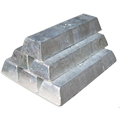
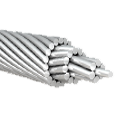

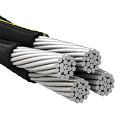
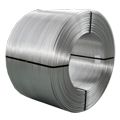
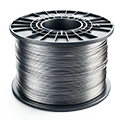
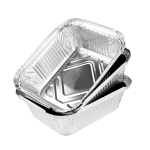





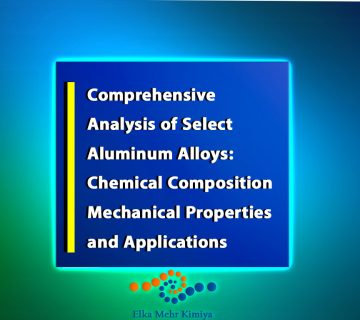
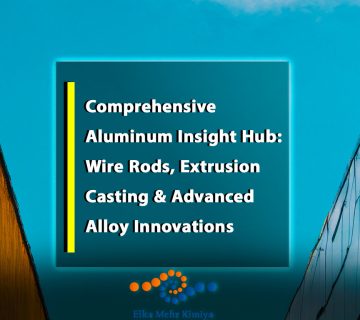
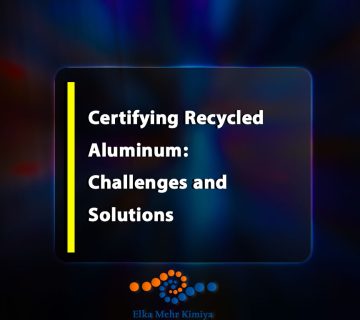
No comment